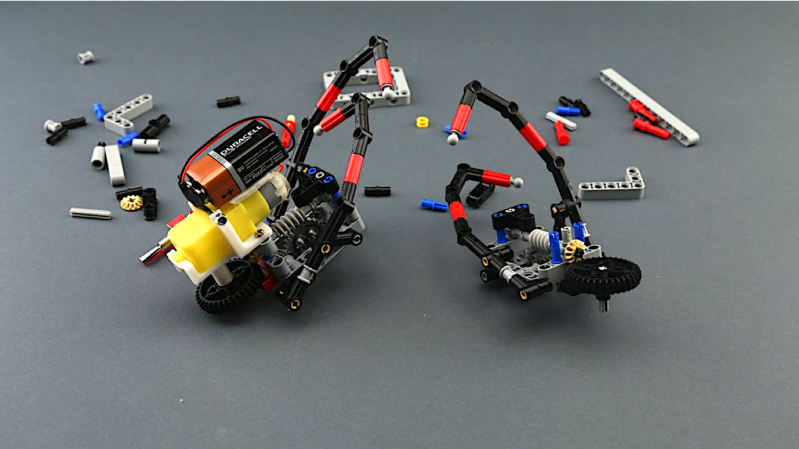The internet has given us plenty of cool robotics projects, but we don’t think we’ve seen one zipline before. At least not until now.
This cool little ziplining robot is courtesy of the folks over at [Tart Robotics]. As they described it, the robot moves using a 4-bar linkage mechanism with the motor’s torque “transferred to the arm mechanisms through a pair of bevel gears and a worm drive.” Even cooler, the robot is activated by clapping. The faster you clap, the faster the robot moves. That’s sure to wow your friends at your next virtual hacker meetup.
They had to do a bit of custom 3D printing work to get a few of the Lego components to connect with their non-Lego off-the-shelf bits, so that took a bit of time. Specifically, they had some cheap, non-branded DC motors that they used that did not naturally mate with the Lego Technic components used to create the rest of the robot’s body. Nothing a few custom 3D printing jobs couldn’t solve.
It always amazes us what cool contraptions you can put together with a few Lego blocks. What’s your favorite Lego project?
















pedantic complaint: this a very cool project but THAT’S NOT A ZIPLINE, it’s just a rope (or a cord or string, if you think it’s too small to be a rope)
A zipline, by definition, is on a slope and uses pulleys and gravity to quickly transport people or cargo to the bottom.
What this robot does (hand-over-hand rope climbing) is arguably much cooler than that.
In terms of zipline definition, you are right. As we already mentioned it in our zipline blog. https://www.tartrobotics.com/blog/zipline-robot/ However, zipline was the closest name we could find for this robot.
Funnily enough, LEGO themselved released a kit very similar to this years and years ago, albeit with a 3 bar linkage. No clapping detection however :(
https://www.worthpoint.com/worthopedia/lego-4094-mindstorms-motor-movers-150133078
Yes, you are right, Lego released a similar product long time ago. However, with no sound interaction . The attached Arduino board gives us the ability to program the robot as well.
This whole thing can be done with a simple transistor circuit.
Why use an Arduino?
^^^ and there it is, the obligatory, “Why can’t it be done with a _____” Give the guy/gal/group credit for an interesting project.
Thank you very much for your support.
Why use lego? This thing could have been done with clothespegs and paddle-pop sticks.
For the 4-bar linkage mechanism, yes, we can do it with paddle-pop sticks. However, for the gear transmission inside the robot , we found Lego Technic gears the handy solution.
For the sound interaction and the microphone, we needed a microprocessor. That is why we used a handy Arduino Nano board.